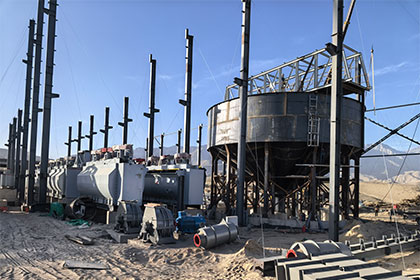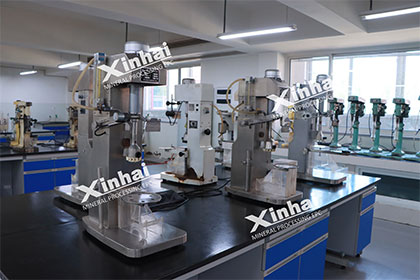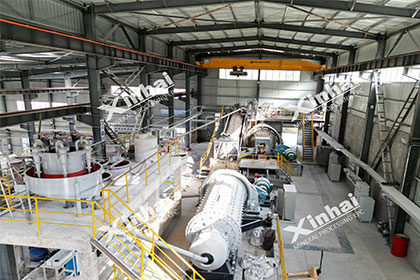Colombia Mining Investment Guide
 Shirley
Shirley
 Sep 18, 2022
Sep 18, 2022
 2041
2041
If you want to know more details about equipment, solutions, etc, please click the button below for free consultation, or leave your requirements!
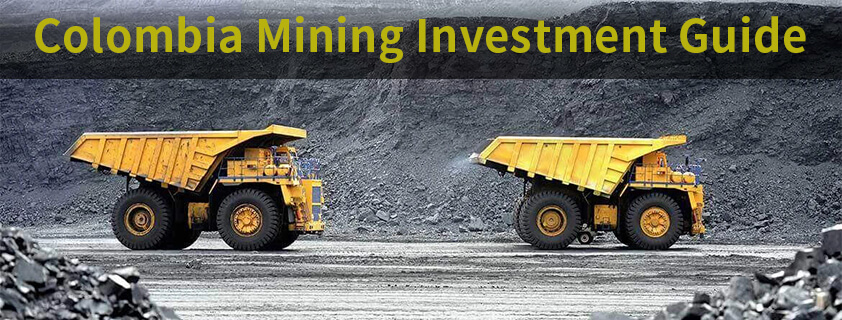
Western Colombia is rich in mineral resources, with coal, oil, and emerald as the main deposits. Before we talked about the Pakistan mining investment guide. This article will introduce the colombia mining investment guide.
01Colombia Overview
BackColombia (Republic of Colombia) is located at the northwestern tip of South America, adjacent to the Panama Canal, the major international shipping artery. Geographical location is very important. Colombia is located in the tropics, and the climate varies according to the terrain. The eastern plains, the south and the Pacific coast have a tropical rainforest climate. Mountains with an altitude of 1000-2000 meters have a subtropical climate. The northwest has a savanna climate. There are 8 major language families in Colombia. The official language is Spanish. Generally, white-collar workers above the middle level can communicate in English.
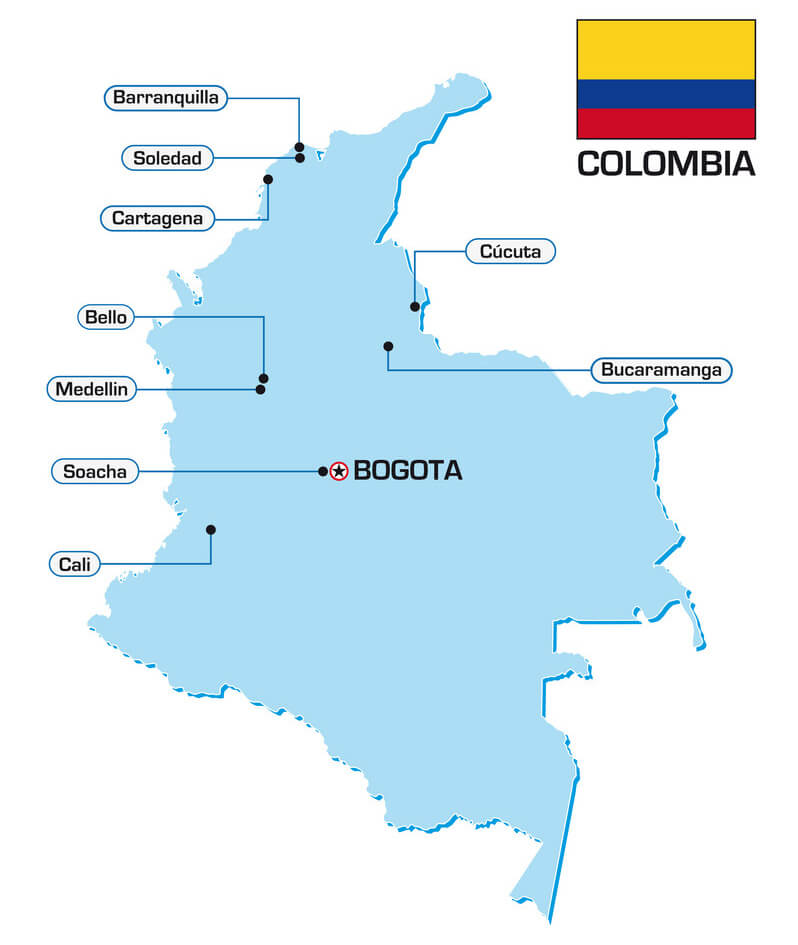
02Distribution of Mineral Resources
BackWestern Colombia is rich in mineral resources, with coal, oil, and emerald as the main deposits. The central part has porphyry copper deposits, porphyry copper-gold deposits, hydrothermal type gold-silver deposits, and iron oxide type iron-copper deposits. In addition, bauxite, uranium, platinum, gold, silver, nickel, iron and other mineral reserves are also very rich.
Solid Minerals
Bauxite Mine
The reserves of bauxite are about 100 million tons, which are mainly distributed in the Cauca-Valle area of Cauca Province, mostly between the Central and Western Cordillera Mountains, which are weathered laterite deposits. Among them, the Morales and Kajibiao deposits are the largest. The Morales deposit has a reserve of about 20 million tons, an aluminum content of 30.8%, and an estimated reserve of about 43 million tons.
Uranium Mine
The reserves of uranium ore are about 40,000 tons, and the disseminated, sandstone and vein-type deposits are mainly found at present. Disseminated deposits are mainly distributed in the Gazon and Santander blocks of the Andean fold belt. Sandstone-type deposits are mainly exposed in Devonian and Carboniferous continental-neritic sediments in the central and southern parts of the Eastern Cordillera Mountains.
Iron Mine
It is found mainly in Pasderio and Berencito regions of Boyaca Province. Pasderio iron deposit is an oolitic (ER) hematite deposit formed in the Paleogene and Neogene, with a proven reserve of 8.3 million tons and an average grade of 46%. Other important iron deposits include the stratified limonite belt in Cerroma Toso, the limestone metasomatized siderite in the Eastern Cordillera, the limonite deposits in Mitu and Sabanaraga, and the banded iron deposits in Guyana.
Gold Mine
Gold reserves of more than 1000 tons, mainly placer ore and vein ore. Placer deposits are found in the regions of Caucasia-Bagre, Choco, Bahuacoas, Saldania, SAN Miguel - La Cera, Almafi-Anori and Guyana. The vein type gold deposits are mainly distributed in the east, Middle Antioquia, West Cordillera, Cauca - Romeral, Ivag - Songsong and Wetes regions in the central and western parts of the country.
Copper Mine
Most of the deposits are small, and there are three types of mineralization:
(1) Porphyry type, the main deposits are Pantanos-Pegadolcito in Antioquia Province and Mocoa in Putumayo Province. The metallogenic period of Pantanos-Pegadolcito copper deposit is Paleogene and Neogene, which occurred in quartz diorite porphyrite.
(2) Skarn type, which is mainly found in small deposits, is caused by the intrusion of copper rich rock strains into carbonate rocks. There is a good geological environment for further discovery of such deposits in the Middle Cordillera Mountains;
(3) Vein type, mainly polymetallic veins associated with gold, silver, lead and zinc, the main ore mineral is chalcopyrite, no secondary enrichment.
Nickel Mine
Colombia has 1.6m tonnes of nickel reserves, the third largest in Latin America. There are six nickel deposits in China, and the minerals are mainly distributed in the north of the Cerromantoso deposit. The ore grade is up to 7% locally, which is a weathered deposit formed in the Quaternary period. The ore body is in the form of ore nest and flat layer. Nickel is dispersed in the veine of nickel-bearing silicate minerals, and the main minerals are goethite, nickel-bearing serpentine and silica-magnesium-nickel ore.
Phosphate Mine
The deposit is related to the late Cretaceous Marine sedimentary rocks distributed along the Eastern Cordillera Mountains, mainly distributed in a nearly 600 km long phosphorous block belt from Norte Santander province in the north to Uila province in the south. The phosphorite in Santander province is distributed in the area of Assouf-Radar-Konshal-Banegas, containing phosphate spheroids and oolitic stones, with a grade of 15% to 27% and reserves of nearly 30 million tons.
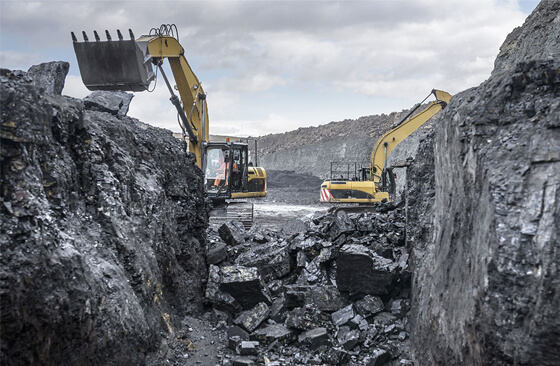
03Mining Management and Policy
BackMining management policies and regulations
The competent or chartered authority for mining in Colombia is the Ministry of Mines and Energy. The law provides that mineral resources are owned by the State, regardless of the type, location and natural and physical state of the minerals. Mining rights are also the property of the Government of Colombia, regardless of whether the land concerned is owned or owned by other public entities, private individuals, communities or groups, and the Ministry of Mines and Energy is responsible for mining management. It mainly follows the latest version of the Mining Law, which was enacted by Law No. 68 on 15 August 2001. There are also specific laws and government restrictions on oil and gas in the country. The mining rights of uranium and geothermal are not clearly stipulated in the mining law.
The laws and regulations affecting investment in exploration and development in Colombia mainly include the Mining Law (2001), the New Labor Law (2002), the New Tax Law (2003), the Foreign Investment Law (2000), the General Provisions of the Environmental Law (1993) and the Law No. 963 (2005).
Mining tax
Colombia has a unified tax system with income tax and value-added tax. Foreign companies and foreigners pay taxes in the same way as legal and natural persons in Colombia. According to the Colombian Constitution and relevant laws and regulations, mining-related taxes and fees mainly include mineral concession fee, royalty, mining land use fee, income tax, excess profit tax, environmental security deposit, etc.
Mineral concession Fee: For the development of state-owned non-renewable resources, Colombia shall pay a certain proportion of mineral concession fee according to the quantity of mineral products and by-products at the pit head. The amount and delivery method of the concession fee shall be stipulated in the concession Contract.
Royalties: Companies conducting mineral development in Colombia must pay certain royalties to the government. The specific regulations are: 10% for coal output above 3 million tons, 5% for below, 12% for nickel and salt, 10% for radioactive minerals, 5% for common metal minerals, and 4% for gold and silver (in the concession contract, placer gold is 6% %), 3% for non-metallic minerals, 1% for building material minerals, and 8% to 25% in royalties for oil companies, depending on their production levels.
Mining land use fee: The current land system in the country is private ownership of land. If the mining activities in the country need to use privately owned land such as companies, groups, individuals, etc., they must be acquired through purchase. Colombia gives national treatment to foreign capital, and there are no restrictions on foreign investment in purchasing land. Land can be acquired in Colombia by signing a sales contract and registering it with the relevant management department. The main land management agencies are the Ministry of Environment, the Ministry of Housing and Land Development, municipal governments, urban planning bureaus, and the Office of Public Documents and Archives.
Excess Profits Tax: This tax is a temporary tax, levied from 2011 to 2014, and is levied on natural persons and legal persons whose property amount exceeds 3 billion pesos on January 1, 2011. The tax base is the property amount approved on January 1, 2011. The tax rate is 2.4% for property value between 3-5 billion pesos and 4.8% for property value over 5 billion pesos.
Income tax: A unified income tax rate of 33% applies to domestic foreign-funded enterprises.
Colombia also collects environmental deposits, stamp duty, deed tax and industrial and commercial tax from enterprises. In addition, Colombia stipulates that mining tunnels pay additional fees to the state.
04Investment Environment Analysis
BackFavorable factors
1. Colombia is rich in energy and mineral resources, and has great prospecting potential for minerals such as nickel, gold and emeralds;
2. Colombia implements a market economy regulated by the government, with relatively sound laws and regulations;
3. Implement mining management policies such as the mine concession contract system, with more investment opportunities and guaranteed rights and interests.
Adverse factors
As a developing country exploring the road of reform and opening up, Colombia's policies will fluctuate, and the protection of foreign investment is greatly influenced by national conditions and public opinion. Before investing and cooperating in Colombia, it is necessary to comprehensively and objectively evaluate the investment environment and do sufficient research work. The main problems that investors encounter when conducting investment cooperation in Colombia are: security issues, difficulties in visa application, business management, difficulties in local financing, labor disputes, etc. In addition, attention should be paid to risks in politics, foreign exchange, law, geological data and society.
 +86 183 3575 8886
+86 183 3575 8886 pinklaurabao@gmail.com
pinklaurabao@gmail.com




 Message
Message Chat Now
Chat Now


